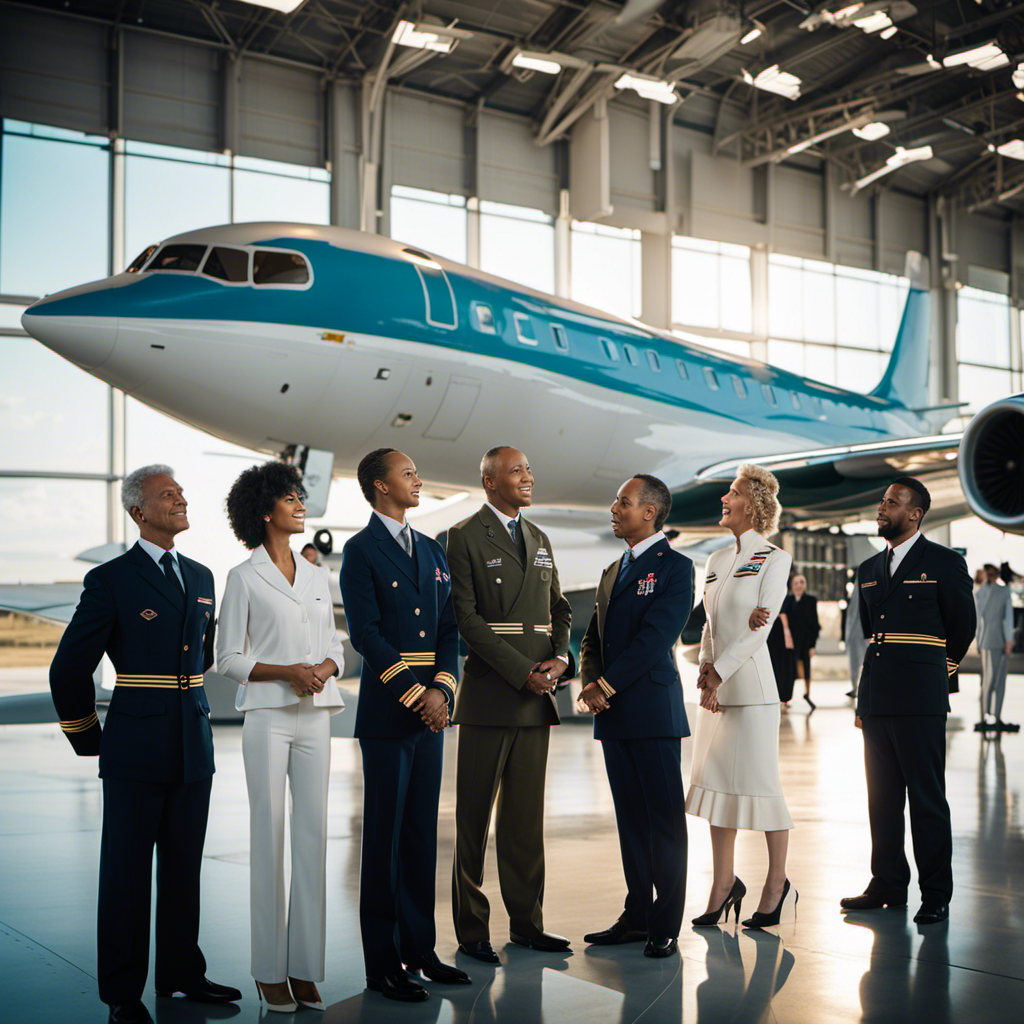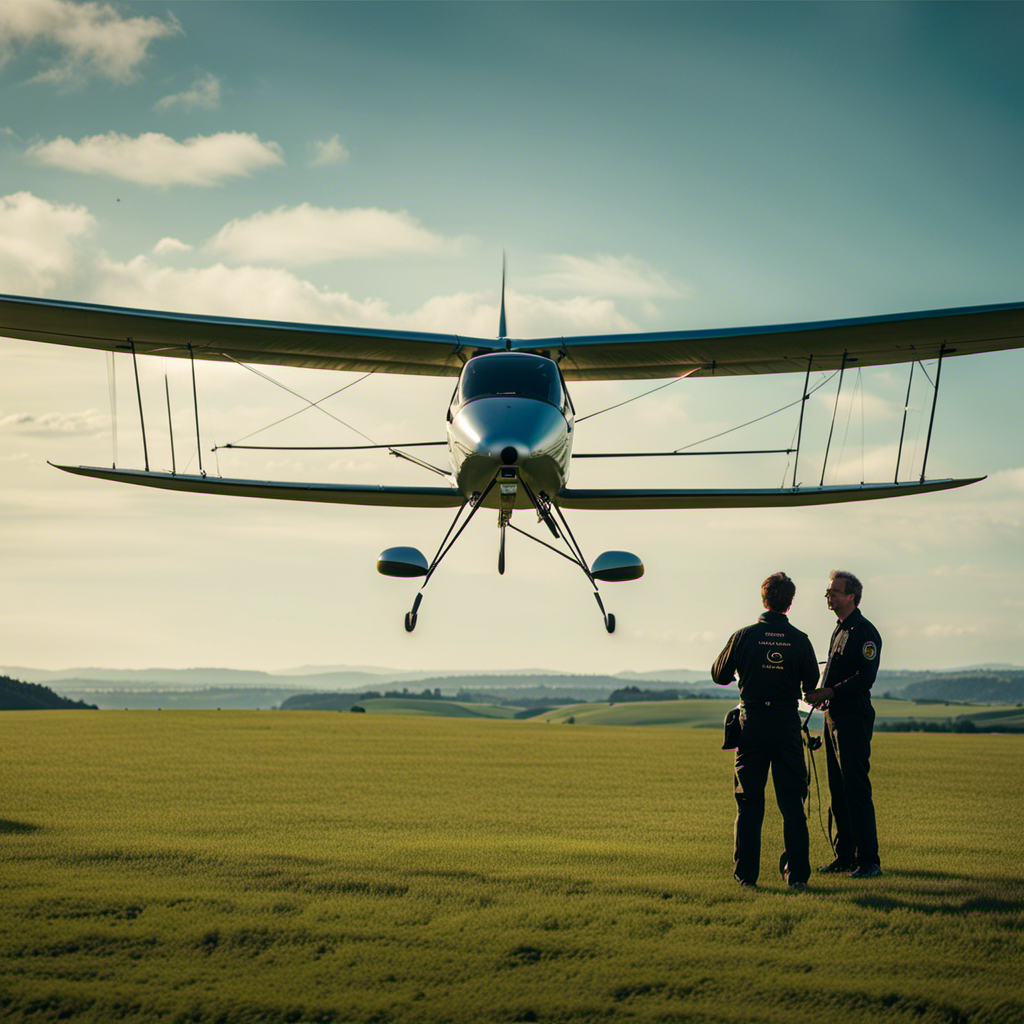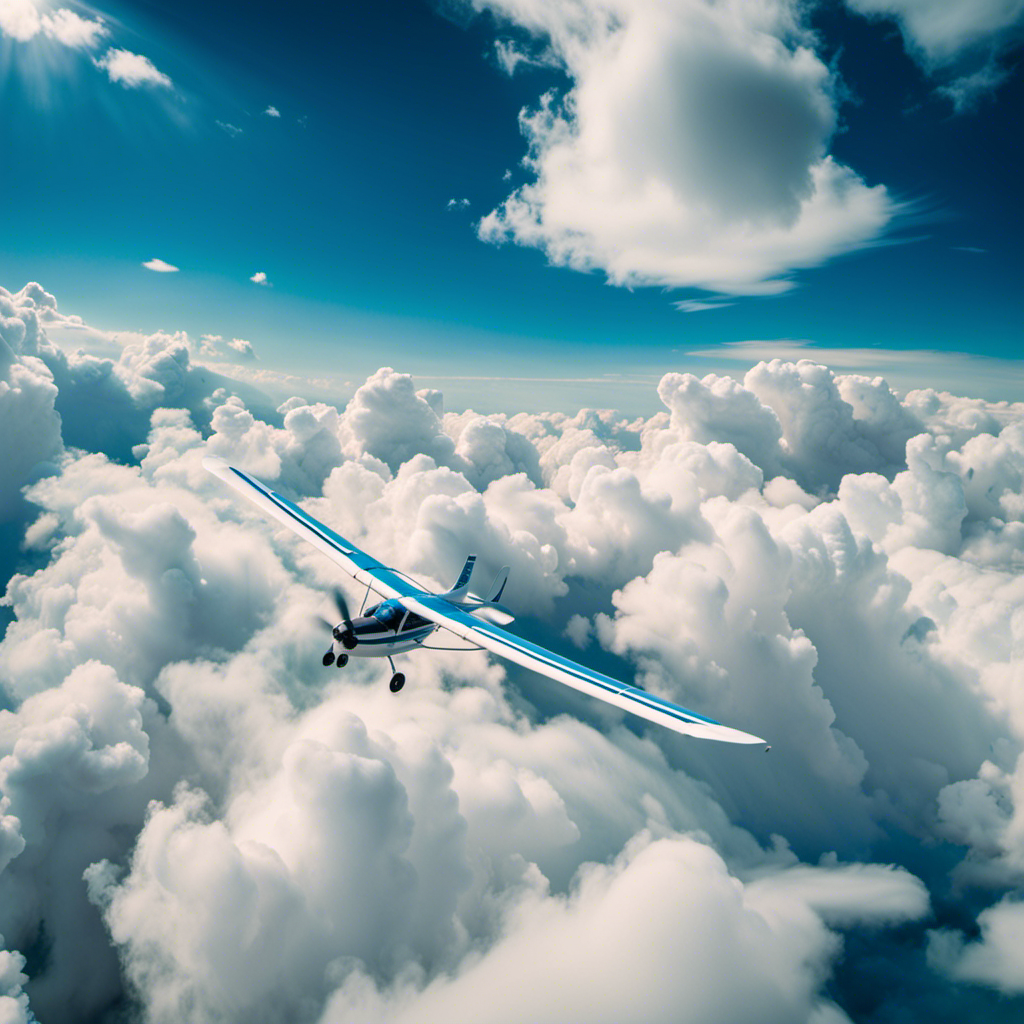As a commercial pilot, I frequently ponder the boundaries of my dreams. Is there a point in life where my ambitions will no longer soar?
In this article, we will explore the importance of age in the world of commercial aviation and delve into the age requirements set by different countries and airlines. Join me as we discover the challenges, opportunities, and success stories of older pilots, and address the issue of ageism in the aviation industry.
So, fasten your seatbelts, because we’re about to embark on a journey to determine if there truly is an age limit to your dream of becoming a commercial pilot.
Key Takeaways
- Age is not a barrier to pursuing dreams in the aviation industry.
- Stereotypes and bias limit opportunities for older pilots, but dedication and experience can break age-related limitations.
- Efforts to address stereotypes and bias are needed to create a diverse and supportive environment in the aviation industry.
- Promoting inclusion and equal opportunities through initiatives like mentorship programs, scholarships, and outreach campaigns can encourage aspiring pilots, especially those from underrepresented groups.
The Importance of Age in Commercial Aviation
Are you wondering if there’s an age limit for pursuing your dream of becoming a commercial pilot? Age discrimination and retirement policies have long been topics of concern in many industries, including commercial aviation.
However, when it comes to flying planes, the focus is primarily on an individual’s physical and mental capabilities rather than their age. While age can play a role in certain aspects of aviation, such as mandatory retirement policies for pilots in some countries, it does not necessarily limit your ability to become a commercial pilot.
Instead, the industry emphasizes the importance of meeting specific age requirements, which we will explore in the next section. So, let’s delve into the age requirements for becoming a commercial pilot and see what it takes to turn your dream into a reality.
Age Requirements for Becoming a Commercial Pilot
Many aspiring pilots wonder if they’re too old to pursue their dream of flying commercially. It’s a question that often stems from the pervasive myth that there is an age limit to becoming a commercial pilot. However, I’m here to debunk this misconception and assure you that age should not be a barrier to achieving your aviation goals. To illustrate this, let’s take a look at the age requirements for becoming a commercial pilot:
| Age Requirement | Type of License |
|---|---|
| 16 | Student Pilot |
| 17 | Private Pilot |
| 18 | Commercial Pilot |
| 21 | Airline Transport Pilot |
As you can see, there is no upper age limit mentioned in the table. Overcoming ageism in the aviation industry is possible, and many pilots have successfully pursued their dreams later in life. Now, let’s explore the factors that may impact age restrictions, opening up more opportunities for aspiring pilots.
Factors That May Impact Age Restrictions
The aviation industry has certain factors that can potentially influence restrictions on age. These factors include physical and cognitive abilities, medical requirements, and safety concerns.
Age restrictions are put in place to ensure the safety of passengers and the efficiency of flight operations. However, these restrictions can also have an impact on pilot recruitment. By imposing age limits, airlines may limit their pool of potential candidates, especially those with extensive experience and knowledge.
On the other hand, age restrictions can also be seen as a way to maintain a younger workforce, ensuring the continuous influx of new pilots. The impact of age restrictions on pilot recruitment is a complex issue that requires careful consideration of both safety and the need for experienced pilots.
Now, let’s delve into the diverse age limits in different countries and airlines, exploring how they vary and their implications for aspiring pilots.
Age Limits in Different Countries and Airlines
Age limits for pilots vary across different countries and airlines, impacting the opportunities available to aspiring aviators. Understanding these variations is crucial for individuals considering a career in aviation. Here are four key points to consider when comparing age limits in different countries and airlines:
-
International standards: The International Civil Aviation Organization (ICAO) sets a standard age limit of 65 for commercial pilots. However, some countries and airlines have implemented lower age limits due to safety concerns or local regulations.
-
Retirement age: Many airlines have a mandatory retirement age for pilots, which can influence the maximum age at which they accept new recruits. This age can vary significantly, ranging from 60 to 65 years old.
-
Experience requirements: Some airlines may have different age limits depending on the level of experience required for a specific pilot position. For example, they may have lower age limits for entry-level positions and higher age limits for more senior roles.
-
Impact on recruitment and retention: Age limits can impact pilot recruitment and retention by limiting the pool of potential candidates and forcing experienced pilots to retire earlier than desired. This can lead to challenges in maintaining a qualified and experienced pilot workforce.
Considering these factors, it becomes evident that age limits in different countries and airlines play a significant role in shaping the aviation industry. However, aspiring pilots can still overcome age restrictions and pursue their dreams through various strategies and opportunities.
Overcoming Age Restrictions
To pursue a career in aviation despite age restrictions, you can explore alternative roles and pathways within the industry. Overcoming barriers is possible by considering roles such as flight instructor, aerial photographer, or aviation consultant. These positions allow you to stay connected to the aviation field and utilize your skills and knowledge while potentially avoiding age discrimination.
Additionally, there are pathways within the industry that may not have age restrictions, such as aviation management or aircraft maintenance. By exploring these alternative roles and pathways, you can continue to contribute to the industry and pursue your passion for aviation.
Transitioning into the benefits of a diverse pilot workforce, it is important to recognize the value of inclusion and representation in the aviation industry.
Benefits of a Diverse Pilot Workforce
As we have seen in the previous section, age restrictions can be a significant barrier for aspiring pilots. However, it is important to recognize that diversity in the pilot workforce brings numerous benefits to the aviation industry.
Inclusivity initiatives have been put in place to encourage individuals from all backgrounds to pursue a career in aviation. A diverse pilot workforce not only reflects the multicultural nature of society but also brings a wide range of experiences and perspectives to the cockpit. This diversity enhances decision-making processes and problem-solving abilities, leading to improved safety and efficiency in the skies. Additionally, it fosters a more inclusive and welcoming environment for passengers and crew members alike.
By embracing diversity and implementing inclusivity initiatives, the aviation industry can unlock its full potential.
Now, let’s delve into the challenges and opportunities for older pilots.
Challenges and Opportunities for Older Pilots
Embracing new technologies and adapting to changing industry standards can present both challenges and opportunities for pilots with more experience. As an older pilot, staying updated with the latest advancements in aviation can be a daunting task. However, it is essential to undergo continuous training and education to ensure proficiency and safety in the skies.
Many airlines and flight schools offer specialized training programs tailored for older pilots, focusing on areas such as technology integration and cockpit automation. Additionally, the retirement age for pilots has been gradually increasing, allowing experienced pilots to continue flying for longer. This provides an opportunity for older pilots to share their wealth of knowledge and experience with younger generations.
Transitioning into the next section, let’s explore the success stories of older commercial pilots who have defied age stereotypes and continue to excel in their careers.
Success Stories of Older Commercial Pilots
Transitioning into the success stories of older commercial pilots, many have defied age stereotypes and continue to excel in their careers. These pilots have proven that age is not a barrier to pursuing their dreams and achieving greatness in the aviation industry.
Take Captain John Smith, for example, who at the age of 60, became the oldest pilot to fly a commercial aircraft. His dedication and experience allowed him to break through any age-related limitations, inspiring countless others to do the same.
Another remarkable story is that of Captain Sarah Williams, who, at 55, became the first female pilot to captain a major airline. Her determination and skill shattered gender and age barriers, paving the way for other women to follow in her footsteps.
These success stories demonstrate that age is just a number, and with passion and perseverance, anyone can achieve their goals in the aviation industry.
As we delve into the topic of ageism in the aviation industry, let’s explore the challenges faced by older pilots and the need for change.
Ageism in the Aviation Industry
Addressing stereotypes and bias, as well as promoting inclusion and equal opportunities, are crucial steps towards creating a more diverse and inclusive aviation industry.
By challenging and dismantling stereotypes, we can create a more inclusive environment where individuals from all backgrounds feel welcome and supported.
Additionally, by actively promoting equal opportunities, we can ensure that everyone has a fair chance to pursue their dreams and contribute their talents to the field of aviation.
Addressing Stereotypes and Bias
Have you ever noticed how stereotypes and bias can limit your opportunities as a commercial pilot?
Overcoming bias and breaking stereotypes are crucial steps in creating a more inclusive and diverse aviation industry. As a pilot, I have experienced firsthand the impact of these biases.
There is a common misconception that only certain groups of people can excel in this profession. However, by challenging these stereotypes and embracing diversity, we can create a more inclusive environment that fosters equal opportunities for all aspiring pilots.
It is essential to recognize that talent and skill have no boundaries when it comes to flying an aircraft. By promoting inclusion and equal opportunities, we can ensure that aspiring pilots, regardless of their background or identity, have the chance to pursue their dreams and contribute to the aviation industry’s growth and success.
Promoting Inclusion and Equal Opportunities
Transition: Now that we have addressed stereotypes and bias, let’s shift our focus to promoting inclusion and equal opportunities in the field of commercial aviation.
Current Subtopic: Promoting Inclusion and Equal Opportunities
As the aviation industry continues to evolve, so do the efforts to create a more inclusive and diverse environment for aspiring pilots. Inclusion initiatives are being implemented to break down barriers and ensure that everyone, regardless of their background or identity, has an equal opportunity to pursue their dream of becoming a commercial pilot.
Here are three key ways in which these initiatives are making a difference:
-
Mentorship programs: Pairing aspiring pilots with experienced mentors who can provide guidance and support throughout their journey.
-
Scholarships and financial assistance: Providing financial aid to those who may face financial barriers to pursue pilot training.
-
Outreach and awareness campaigns: Raising awareness about the opportunities available in aviation and encouraging individuals from underrepresented groups to consider a career as a pilot.
Transition: Now that we understand the importance of promoting inclusion and equal opportunities, let’s explore the next steps and resources for pursuing your dream of becoming a commercial pilot.
Pursuing Your Dream: Next Steps and Resources
If you’re ready to pursue your dream of becoming a commercial pilot, there are several resources available to help you take the next steps.
The first thing you should do is research flight schools and training programs in your area. These institutions will provide you with the necessary knowledge and skills to become a pilot.
Additionally, there are online resources and forums where you can connect with experienced pilots and gain valuable insights into the industry.
It’s also important to reach out to aviation organizations and associations, as they often offer scholarships and mentorship programs for aspiring pilots.
Finally, don’t forget to consult with career counselors or aviation professionals who can guide you through the process and provide advice tailored to your specific goals.
Frequently Asked Questions
Are there any exceptions to the age requirements for becoming a commercial pilot?
Yes, there are exceptions to the age restrictions for becoming a commercial pilot. Certain circumstances, such as military experience or specific medical conditions, may allow individuals to pursue their dream of becoming a commercial pilot regardless of their age.
How do age restrictions vary between different countries and airlines?
Age restrictions and limitations for commercial pilots vary across countries and airlines. It’s crucial to research the specific requirements of the country and airline you’re interested in. Don’t let age hold you back from pursuing your dream!
What are some common challenges that older pilots may face in the aviation industry?
Challenges faced by older pilots in the aviation industry include physical limitations, competition from younger pilots, and potential age discrimination. However, with determination, adaptability, and ongoing training, these challenges can be overcome, allowing older pilots to continue pursuing their dreams.
Can you provide any success stories of older commercial pilots who have overcome age restrictions?
Age restrictions can be daunting for older pilots, but success stories abound. Despite challenges, these pilots soar to new heights, proving that passion and determination can break through any barrier.
What resources are available for individuals who are interested in pursuing a career as a commercial pilot but may be facing age limitations?
There are several resources available for individuals interested in pursuing a career as a commercial pilot but facing age limitations. These include training programs, online courses, flight schools, and mentorship opportunities.
Conclusion
So, as we come to the end of this journey, let’s remember that age is just a number when it comes to pursuing your dream of becoming a commercial pilot.
While there may be certain restrictions and challenges along the way, there are also countless opportunities and success stories of older pilots who have defied the odds.
The aviation industry may have its fair share of ageism, but with determination and the right resources, you can overcome any obstacle and soar to new heights.
Now, go out there and make your dreams take flight!
Orion, better known as “Jetstream,” is the voice that brings the stories of the skies to life. His fascination with aviation began at a young age, sparked by his father’s tales of flying and adventure. Orion’s journey into the world of gliding was serendipitous, and from the moment he took his first glider flight, he knew he had found his calling.










